‘Vigilance is key’ – expert tips to combat the most common azalea diseases
A whole host of fungal diseases can cause major issues for azaleas
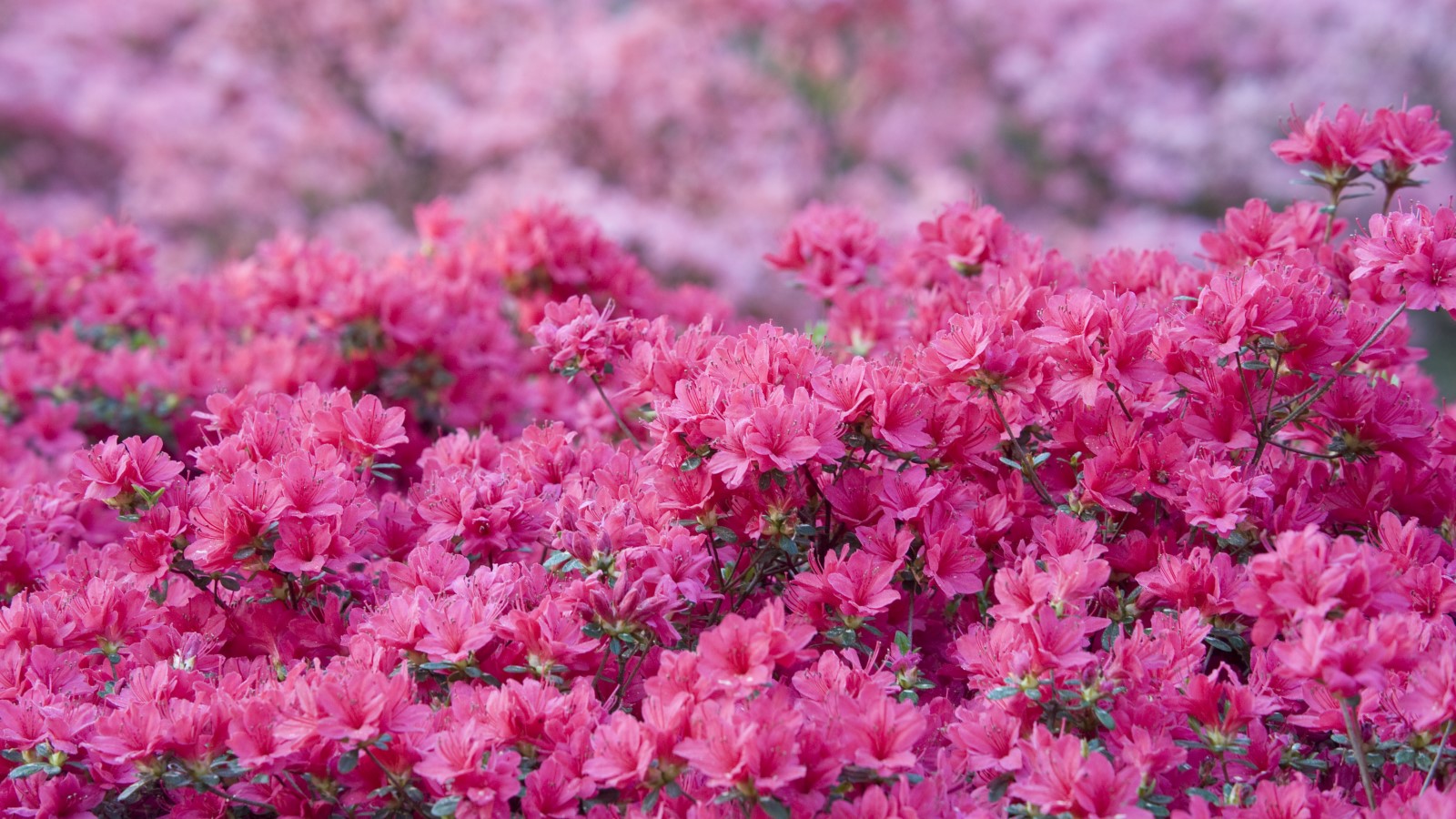

Azaleas come in a huge variety of cultivars that offer blooms in a range of colors, but there are also a number of diseases that can damage these shrubs.
The likes of gall, rust, blight, mildew, rot and leaf spot are all fungal diseases that can affect the whole azalea, from the leaves and flowers to the stems and roots.
If you are new to growing azaleas it may seem like a constant battle with azalea diseases. However, many of these issues are easily avoidable and good cultural techniques in terms of looking after the shrubs can go some way to prevent problems hitting them.
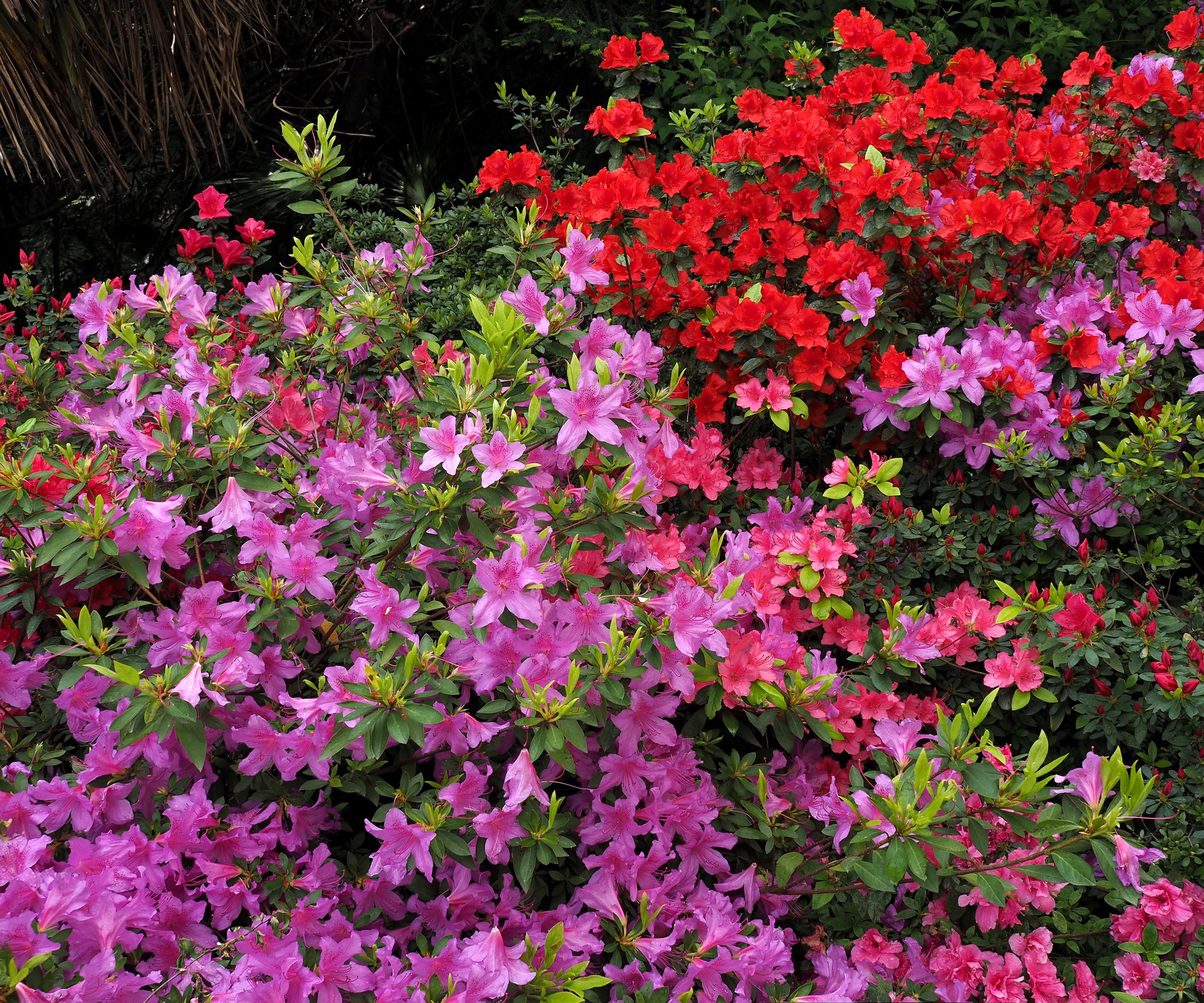
Azaleas come in many colors
Spotting the signs of azalea diseases
Azaleas are one of the best flowering shrubs and are hugely popular as part of backyard landscaping ideas. They are also great shrubs for the front of the house thanks to their fantastic spring colors.
They look stunning when in full pomp as part of any flower bed ideas, however the plants can quickly show signs of problems when affected by azalea diseases. Though there are many ways you can help prevent issues, including using proper planting techniques, adequate watering practices, and regular pruning.
Jenna Shaughnessy, the Boston-based gardening expert at Jenna Kate at Home, recommends that by implementing ‘proactive measures’ such as these you can create ‘optimal growing conditions that make azaleas less susceptible to diseases’.
She adds that prevention and vigilance is key to maintaining healthy azaleas, saying: ‘Early identification of azalea diseases is crucial for effective management. It’s essential to familiarize yourself with the distinctive visual symptoms and changes in plant behavior associated with common diseases.
‘Regularly inspect your azaleas, paying close attention to leaf discoloration, wilting, powdery growth, or unusual spots. Swift action can prevent diseases from spreading and causing irreparable damage.’
We take a closer look at six of the most common azalea diseases to give an insight into the signs to look out for and what action you can take to protect your plants.

Jenna Shaughnessy lives in Boston and runs the Jenna Kate at Home blog, a portal for beautiful home decor ideas and inspiration. The site shares her adventures remodeling and redecorating a 1960s Colonial on a large lot. She has also written, developed, and photographed a home decorating guidebook.
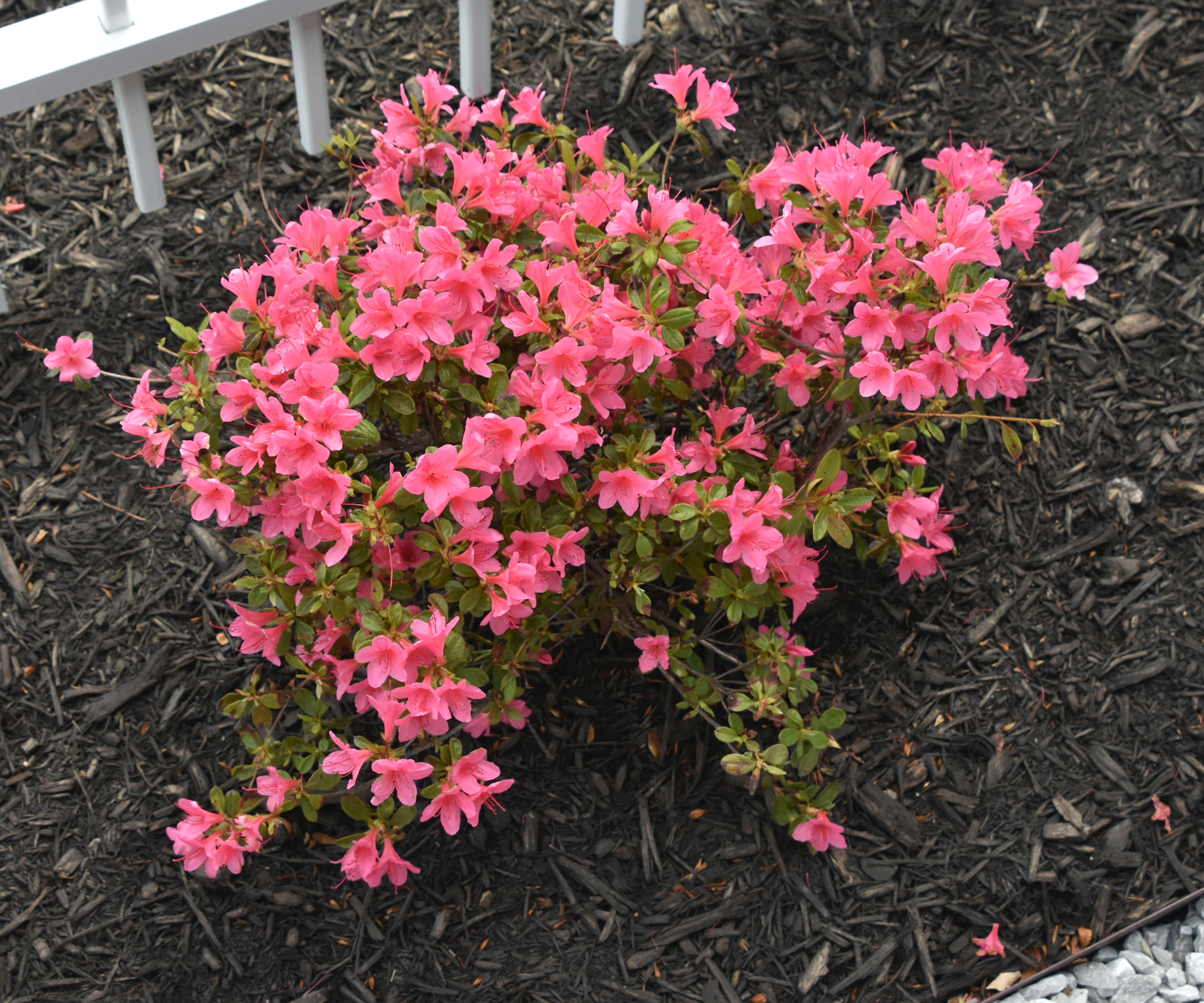
There are thousands of azalea cultivars worldwide to choose from
1. Azalea gall
Azalea gall is a common fungal azalea disease caused by the fungus Exobasidium vaccinii. It causes distorted and abnormal growth in the form of swellings on the stems, leaves, and flowers. These galls often occur in spring and the leaves can become curled and fleshy. Galls commonly start off pale green and then turn white in color when they get covered in spores.
Vladan Nikolic, a plant expert with over 10 years of experience and the founder of Mr Houseplant, claims that although galls spoil the appearance of the plant, it is ‘not a serious threat to its health’.
He adds: ‘There is no need to apply fungicides, and it’s enough to remove galls manually. Just keep in mind that it’s important to remove them before the white layer of spores starts to form on them.
‘To prevent gall, you should ensure that there is good air circulation when planting azaleas. Also, make sure that drainage is good and that the soil doesn’t stay soggy. There are some azalea cultivars that are resistant to gall, and these include Sensation, Formosa, and Aphrodite.’
Buy a gall-resistant Formosa Azalea from Nature Hills.
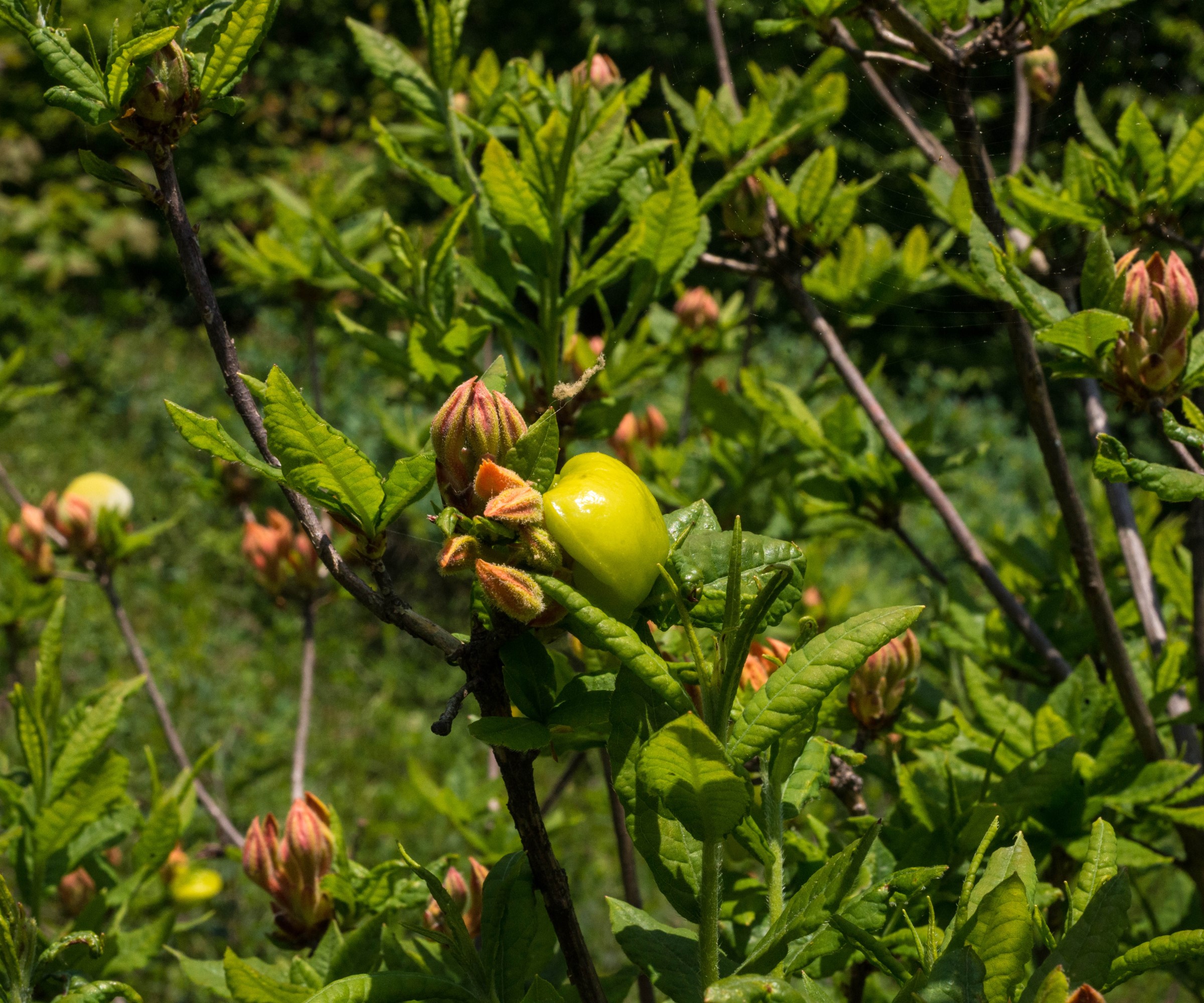
Azalea gall causes fleshy swellings to occur on the shrub
2. Azalea rust
Rust is another fungal disease and it is recognizable as it causes red and orange spots on the underside of leaves. This can also be combined with yellowing spots on the tops of leaves and, if the problem worsens, leaf drop and stunted growth.
It is imperative to identify signs of rust quickly and remove and destroy any infected leaves and shoots, do not put them in the home compost or save leaves to make leaf mold. The fallen leaves act as a breeding ground for rust spores. You can get fungicides labeled to control rust to be used if the problems persist. One example of a product for rust is Bonide Sulfur Plant Fungicide available at Amazon.
To prevent rust, space plants properly and ensure good air circulation around your azaleas. Water only in the morning and avoid overhead watering and getting moisture on the leaves. Those two are some of the more common garden watering mistakes and crucial to avoid if you want to prevent fungal diseases of plants. There are azalea cultivars available that are rust-resistant.

Giving azaleas proper space is one way to help avoid rust
3. Azalea petal blight
Yet another fungal disease, petal blight hits the flowers and the infection causes unsightly spots that give petals a freckled look. The spots are brown on white azaleas and white on colored flowers. These spots get bigger and the petals can eventually turn brown and mushy as they die. Petal blight is a big problem during periods of wet weather and the infection is spread by wind and rain, as well as insects.
Any infected flowers need to be picked and removed, and any that have fallen must be cleared up and destroyed too. Avoid overhead watering to reduce the chances of petal blight spreading, while correct azalea pruning and spacing can increase air circulation and lessen the potential of the disease spreading.
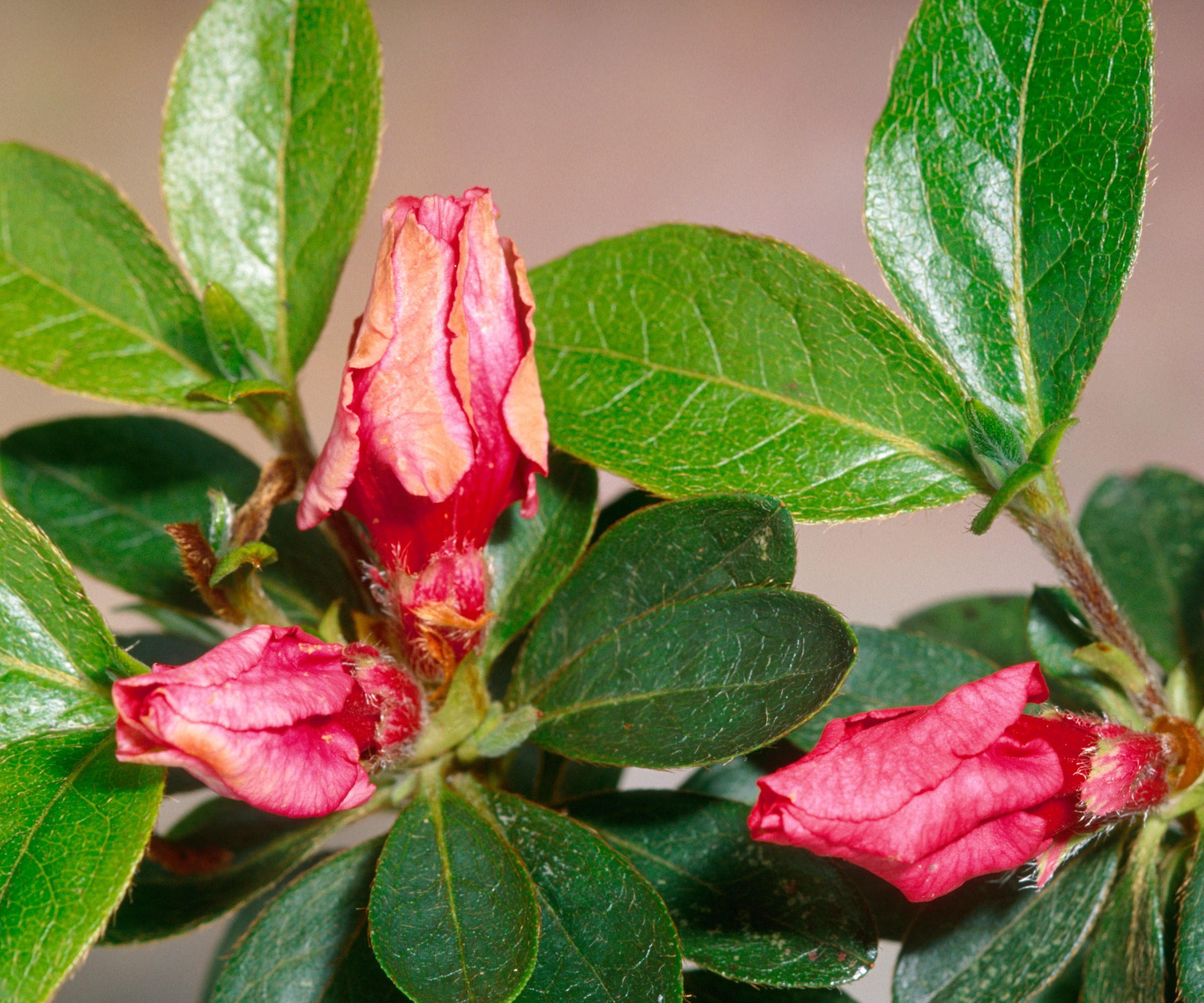
Flowers infected with petal blight will start to rot
4. Azalea root rot
The Phytophthora fungus species can cause both root and crown rot in azaleas and it thrives in poor-draining locations. The first sign of rot is wilting, followed by the curling and browning of foliage and a general decline of the plant’s health. Roots can become dark, mushy, and decayed, while crown rot causes stems to go brown near the soil level.
Ensuring proper drainage and watering of azaleas is key to combating rot. Make sure to plant azaleas at the right depth and improve the drainage to prevent any waterlogging. Avoid over-watering the plants and also refrain from excessive mulching around the base of plants.
Chemical controls are ineffective and the disease is very difficult to treat. Once rot has got into your azaleas, it is best to remove and destroy the affected plants. There are a good amount of azaleas available that are resistant or moderately-resistant to root and crown rot.
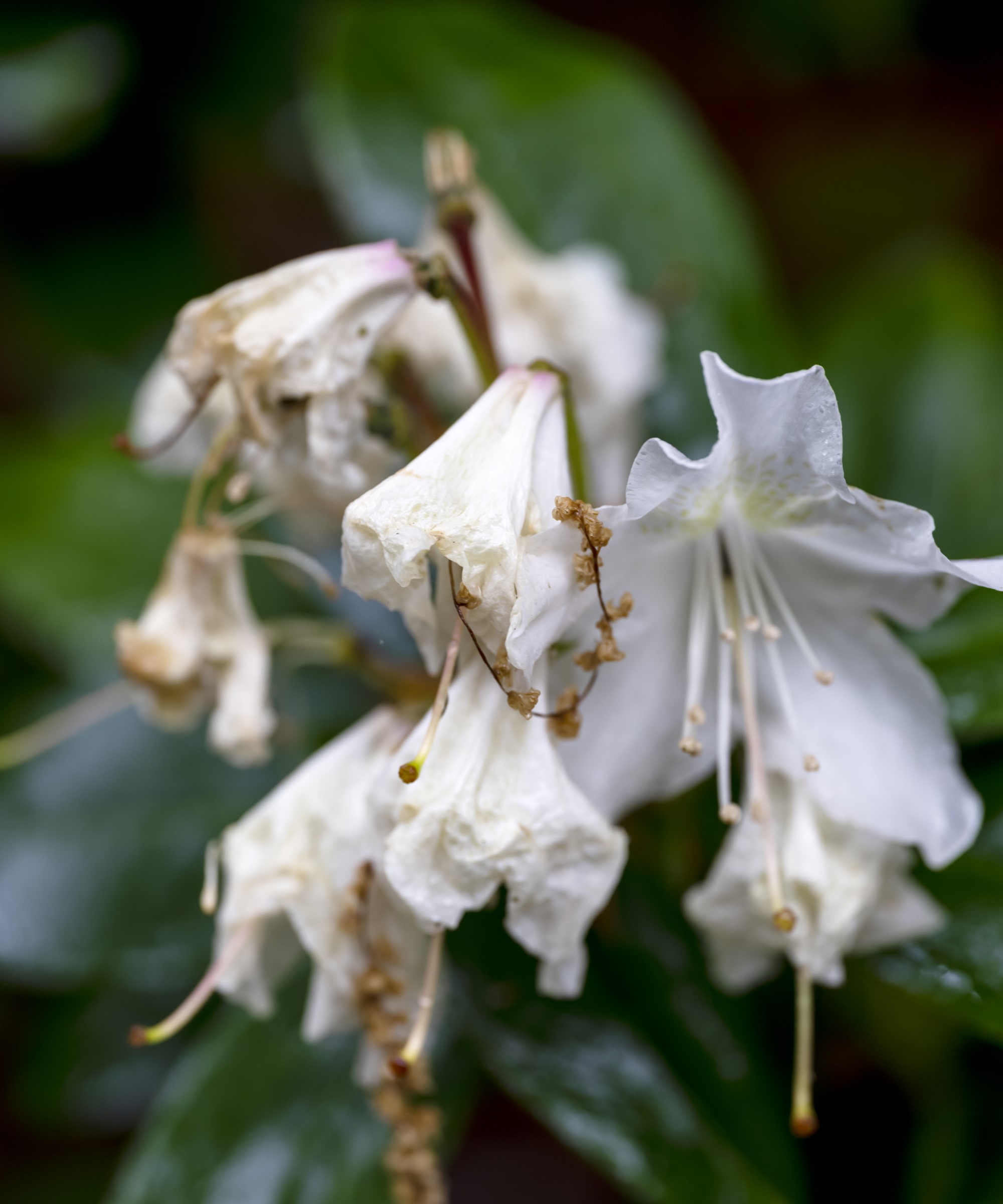
Root rot causes flowers to wilt and turn brown
5. Azalea mildew
Powdery mildew is a common fungal disease that affects many different plants, caused by the fungus Microsphaera penicillata. It occurs predominantly during late summer and fall and it coats leaves, branches and buds with a white, fuzzy, powdery growth. Diseased leaves hit by powdery mildew can start to prematurely drop.
Cultural practices are important to combating powdery mildew. Adequate spacing, pruning, and thinning branches will allow good circulation between the plants. Watering at the base will prevent spores spreading from leaf to leaf. Azaleas can also be more prone to powdery mildew if they are planted in the shade.
Diana Cox, an experienced gardener and founder of The Gardening Talk, cites pruning infected leaves and branches as ‘essential for containment’ of powdery mildew.
She adds: ‘Additionally, ensuring adequate air circulation and providing shade during hot afternoons can help mitigate the problem. As a natural fungicide, consider spraying your plants with a mixture of baking soda and milk.’

Diana Cox is a gardener with over 15 years of experience and the founder of The Gardening Talk, a trusted website for gardening advice.

Mildew causes white fuzz on azalea leaves
6. Azalea leaf spot
Leaf spot tends to just cause minor aesthetic damage to the plant, with its dark irregular spots appearing on leaves. Spots can be brown, black, or reddish and they turn yellow before leaves eventually drop from the plant in worst-case scenarios.
Any infected foliage needs to be removed and destroyed to prevent the disease further spreading. Fungicides are available and neem oil sprays, available at Amazon, can be used to combat leaf spot. However, as with many other diseases, proper watering at the base of the plant can prevent moisture on leaves that invites the presence of the fungus.
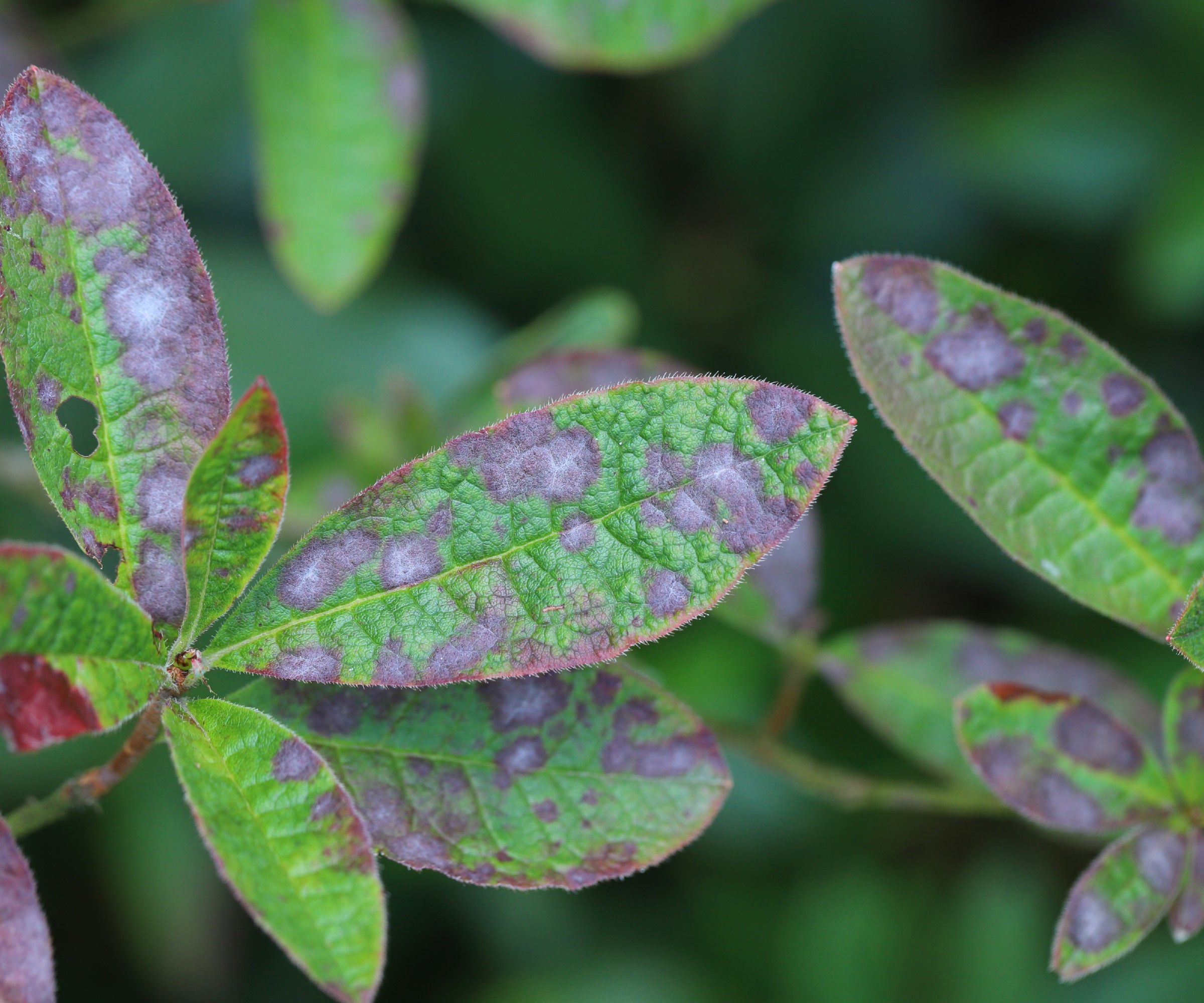
Leaves infected with leaf spot need to be removed and destroyed
There are many azalea diseases that can hit plants, but thankfully modern developments in azalea breeding now means there are also lots of disease-resistant varieties to choose from. Do a bit of research before picking an azalea for your backyard, it can help alleviate potential problems down the line. And always maintain your plants properly, as it cannot be underestimated how simple things like planting at the right level, giving good spacing, watering from below, fertilizing azaleas when required, and pruning are all proven techniques to help reduce the risk of azalea diseases.
For more azalea information, see our guide on how to deadhead azalea and rhododendron flowers, to keep your shrubs looking good.
Sign up to the Homes & Gardens newsletter
Design expertise in your inbox – from inspiring decorating ideas and beautiful celebrity homes to practical gardening advice and shopping round-ups.

Drew’s passion for gardening started with growing vegetables and salad in raised beds in a small urban terrace garden. He has worked as a professional gardener in historic gardens and specialises in growing vegetables, fruit, herbs, and cut flowers as a kitchen gardener. That passion for growing extends to being an allotmenteer, garden blogger, and producing how-to gardening guides for websites. Drew was shortlisted for the New Talent of the Year award at the 2023 Garden Media Guild Awards.
-
 A $170 limited-time discount makes this the most affordable Dyson cordless vacuum on the market right now
A $170 limited-time discount makes this the most affordable Dyson cordless vacuum on the market right nowYears after its release, the Dyson V8 still impresses us with its features and power
By Dan Fauzi Published
-
 Victoria Beckham has a unique formula for perfect bedding: 'Very expensive sheets and cheap pillows' – you can follow her example from $15
Victoria Beckham has a unique formula for perfect bedding: 'Very expensive sheets and cheap pillows' – you can follow her example from $15Victoria revealed she goes for crisp, white bed sheets and pillows with neck support from Target – and you can shop similar buys at an ultra-low cost
By Hannah Ziegler Published